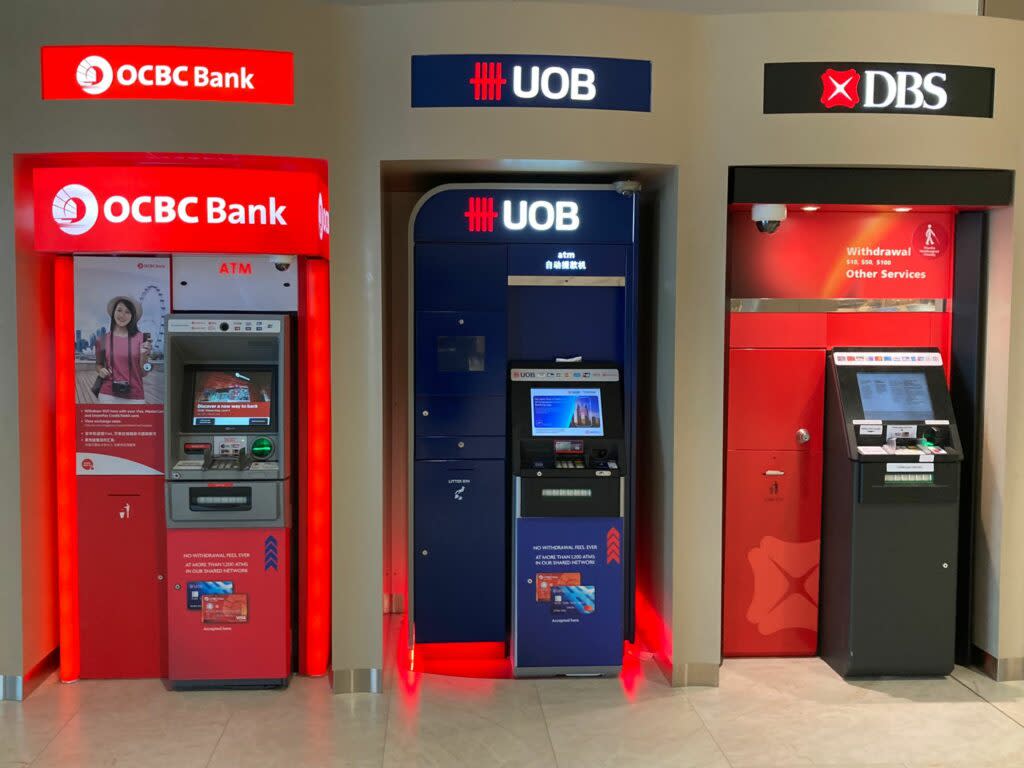Interest Rates Are Stabilising While the Economic Outlook is Cloudy: Are Singapore Banks Facing a Perfect Storm?

Singapore banks’ share prices have not performed well year to date.
DBS Group (SGX: D05) and United Overseas Bank (SGX: U11), or UOB, have both seen their share prices fall by 8.3% and 8.9%, respectively.
Only OCBC Ltd (SGX: O39) has eked out a small year-to-date gain of 0.7%.
Investors are feeling jittery about the prospects for these blue-chip lenders as the economic outlook darkens, raising fears of a punishing recession.
The US Federal Reserve may also be pausing its aggressive rate hikes soon.
Interest rates may finally be stabilising after rising at their sharpest pace in history.
However, inflation remains elevated in both the US and Singapore, adding another headwind to the banks’ operating costs.
Are the local banks facing a perfect storm of negative events that may cause their earnings to plunge?
Let’s dig deeper to find out.
The fading interest rate tailwind
The three lenders enjoyed a strong boost to their net interest income (NII) as the net interest margin (NIM) soared in tandem with the rise in interest rates.
For its recent 2023 first quarter (1Q 2023) earnings, DBS saw NII surge by 69% year on year with its NIM hitting 2.12%, up significantly from 1Q 2022’s 1.46%.
UOB’s NII jumped 43% year on year while its NIM came in at 2.14%, up from 1.58% a year ago.
OCBC’s NII soared by 56% year on year along with a sharp jump in NIM from 1.55% to 2.3% in 1Q 2023.
The US Federal Reserve does not seem to be done with its interest rate hikes, as chairman Jerome Powell juggles between raising rates further and possibly triggering a recession.
The current consensus is that the central bank may skip an interest rate increase later this month but that the officials are not done yet with the increases as they assess more incoming economic data.
Whatever the final decision, the trio of banks are unlikely to enjoy the same surge in NIM as in 1Q 2023.
One reason is that the pace of interest rate hikes is now slowing as the Federal Funds Rate is now hovering in the range of 5% and 5.25%.
Further rate hikes may bring on more pain to consumers and businesses and the central bank needs to carefully calibrate its policy.
The Federal Reserve is also carefully assessing the impact of higher rates after several bank runs that led to the collapse of four US lenders.
Moreover, the Singapore banks have also seen mortgage rates decline due to competition and are also poised to further lower them.
On the other hand, fixed deposit rates have hovered between the 3% to 4% range for all three banks, raising their cost of deposits as they attract savers keen to park their money for better returns.
Hence, it is likely that NIMs have peaked or are close to peaking and will stabilise from the second quarter onwards.
Investors may not see the same NII surge witnessed in 1Q 2023 but the overall higher NIM should still ensure NII remains at current levels.
An uncertain economic outlook
The second worry is that banks may face an increased level of bad and doubtful loans if the economy weakens or falls into a recession.
On this front, the US has reported a strong jobs report for May, thus lowering the odds of a recession in the next 12 months.
However, several economists think that Singapore may be unable to avoid a recession as the country’s gross domestic product (GDP) comes from external trade.
Elsewhere, the Ministry of Trade and Industry (MTI) expects GDP to expand by 0.5% to 2.5% in 2023 and believes that the economy can avoid a technical recession because of the ongoing recovery in travel and tourism-related sectors.
The jury is out for now, but it appears that China’s reopening may also add a spark of growth to Singapore’s numbers.
DBS has strengthened its general provisions as a prudent measure while UOB remains confident of Asia’s growth.
The good news is that all three banks are no strangers to economic cycles and have positioned themselves well to tackle such challenges.
Get Smart: Resilient and well-prepared
If there are two adjectives to describe all three lenders, they are “resilient” and “prepared”.
Their 1Q 2023 commentary shows that they are aware that the NIM tailwind is temporary, while also positioning themselves for potential economic headwinds.
A storm may eventually arrive.
But the three banks will stand ready and should not falter even when the going gets tough.
If you’re looking to invest in 2023, our latest FREE report can guide you. It shows you how to find dividend stocks in SGX, and a nearly fool-proof way of building your portfolio. Many people love dividend investing, but few truly know how to profit from it consistently. Click the link here to download our new report and discover the secrets!
Follow us on Facebook and Telegram for the latest investing news and analyses!
Disclosure: Royston Yang owns shares of DBS Group.
The post <strong>Interest Rates Are Stabilising While the Economic Outlook is Cloudy: Are Singapore Banks Facing a Perfect Storm?</strong> appeared first on The Smart Investor.


